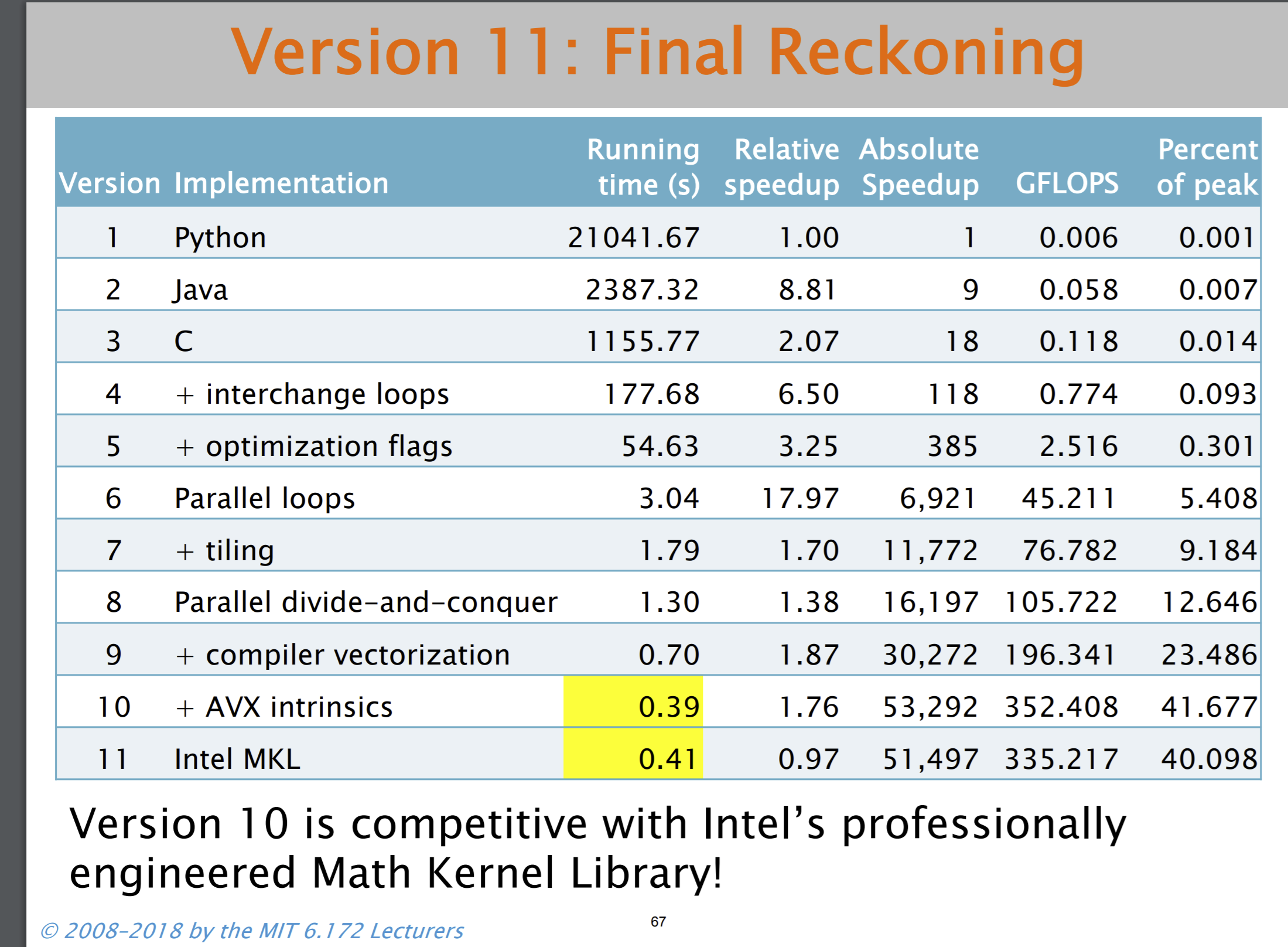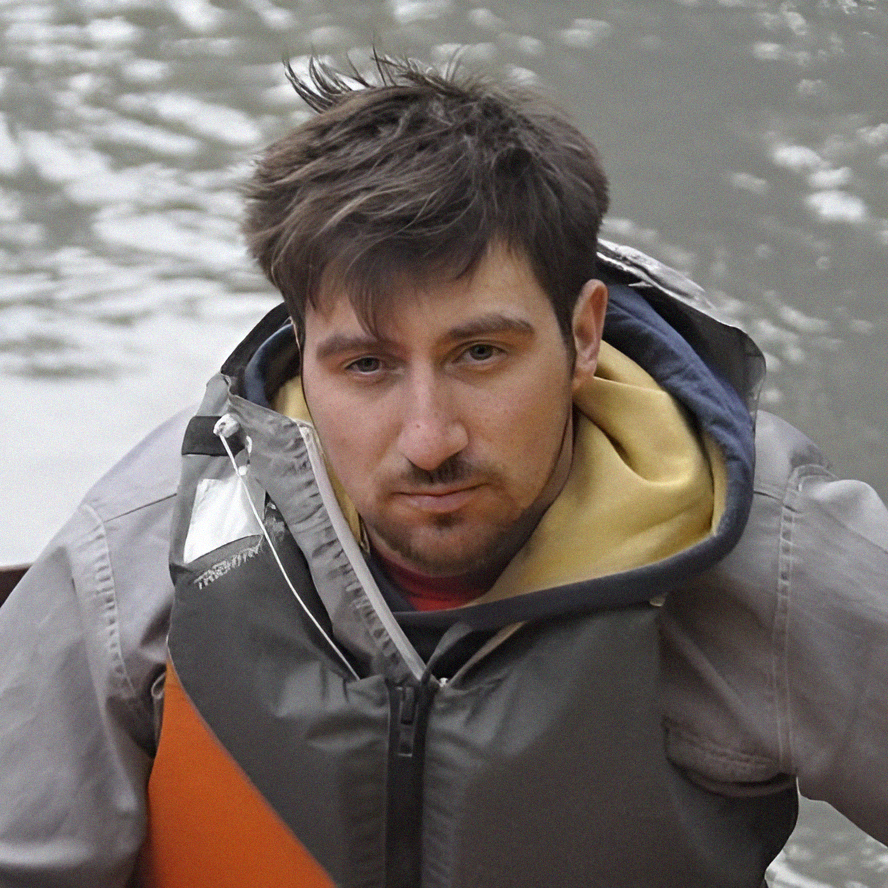About Performance Engineering Course 6.172 at MIT
About advanced course “6-172. Performance Engineering of Software Systems.” at MIT with summarizing useful materials from that course for anybody who wants to optimize binary code performance.
The advanced course Performance Engineering of Software Systems provides various exciting insights on optimizing the performance of code dedicated for the execution in general-purpose CPU processors. The published materials from MIT contains slides and video of lectures. This course is not about compilers or applying some contemporary math areas to improve performance but about improving algorithm performance in real hardware with careful optimization of performance. So it is about constants that are hidden in the complexity of algorithms.
The course was instructed by Prof. Charles E. Leiserson, co-author of the classical book Introduction to Algorithms, and by Prof. Julian Shun.
In some sense, there are a lot of valuable materials, and all lectures are interesting. But I would like to bring some insights about several of them.
Lectures overview
Lecture 1 presented a path on how to implement and to even beat Intel MKL library for dense matrix multiplication in fp32 on square matrices with 4096 x 4096 elements. Another thing the lecture demonstrated that standard Python interpreter (CPython) is 51497 slower than highly optimized C code, and standart Java virtual machine is 5000 slower than highly( in fact crazy) optimized C. Table from Lecture-1 with speed comparison of implementations is presented below:
 |
This is coincident with Bjarne Stroustrup’s story that he shared in 2017 https://youtu.be/fX2W3nNjJIo?t=558 at 09:20:
“People select the simplest thing to pick up, and it’s Python…And then they are out of CPU power…I heard about biologists who run a 3-month run. It could be done in 10 minutes. And we know it because it was done when we can not wait for three months anymore..”
Speedup from that experiment that B.Stroustrup mentioned in 2017 after moving to C++ from Python is the following: 3*30*24*60/10=12960.
Lecture 2 summarize John Bentley rules invented around 1990 for the current area 2018+. It contains suggestions for improving data structures, loops, logic, and functions.
Lecture 3 present several specific Bit Haks tricks that sometimes allow eliminating branches in the code and improve branch predictions. Sometimes the compiler does not perform such optimizations, and you have to do it yourself by hand. Another material about the subject is in the documents Bit Twiddling Hacks By Sean Eron Anderson and in Hacker’s Delight in Henry S. Warren, J.
Lecture 4 and Lecture 5 present several things about how a computer works. People aware of System Programming and how the computer is working can skip that or refresh. As far as I know, people who do EE are narrowly specialized these days, so this material is useful for everybody.
Lecture 10 was about accurate measurement time for algorithms and discussed best practices.
Lecture 11 brings strategies for implementing heap allocation (Fixed-size allocation using free lists, Variable-sized allocation using binned free lists) and garbage collector(GC) with mark-and-sweep and stop-and-copy algorithms. Another important thing that the lecture introduces is that if your system has GC, it implies several pretty strong requirements for a language: (a) strong type systems; (b) complete absence of real pointers.
Another lecture covers various topics such as threads, caches, races, and what compilers can and can not do.
Lecture 18 was a guest talk from prof. Saman Amarasinghe. He gave a lecture where he covered a bit all systems that he co-developed with his peers:
- GraphIt https://people.csail.mit.edu/jshun/graphit.pdf
- Halide https://people.csail.mit.edu/jrk/halide-pldi13.pdf, https://halide-lang.org/
- OpenTuner https://ieeexplore.ieee.org/document/7855909
During the lecture, prof. Saman Amarasinghe has mentioned that:
- YouTube processes each video with Halide at the input stage
- Adobe Photoshop is rewritten into Halide
GraphIt is a DSL language that allows actual tuning performance for graph algorithms, where algorithms need to be implemented at the low-level/metal level.
Another exciting guest lecture was Lecture 21 with Jon Bentley, who during being D.Knuth student invented KD-trees. In his talk https://www.youtube.com/watch?v=SS5KfIFzfEE, Jon Bentley showed how to make not-empirical Travel Salesman Problem(TSP) workable (typically for) in 40-50 cities, where distance is Euclidian distance in the 2D plane with using various pruning and software optimization tricks.
Conclusion.
What makes this material pretty unique is that there are real examples of how to improve real algorithms. Unfortunately, many books on such a level of granularity in computing systems do not provide any examples completely.
Reference to Python.
In 2022 Python has gained big popularity. If you, for some reason, develop a strong system in Python, and you want to gain knowledge beyond the root and great book created by Guido van Rossum https://docs.python.org/3/tutorial/ - the materials from one Python enthusiast, David Beazley, can be extremely useful for you:
